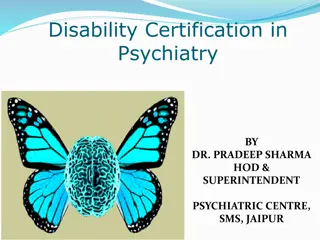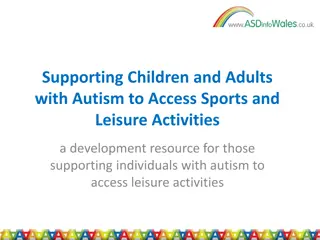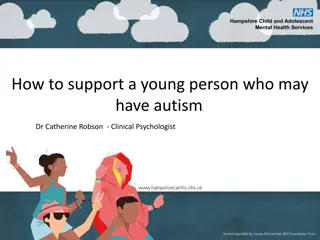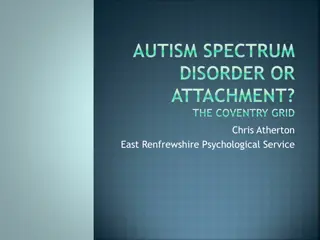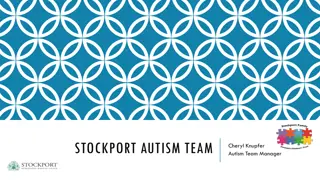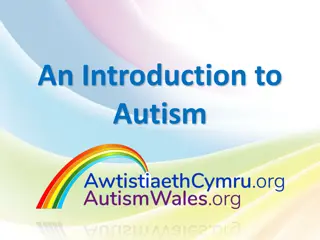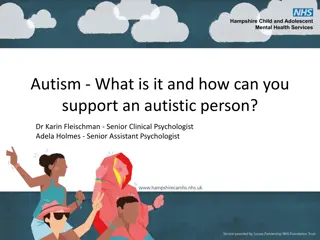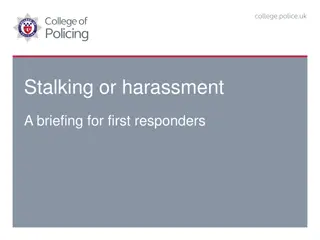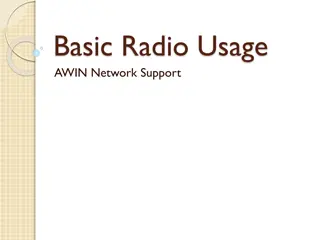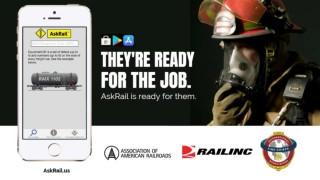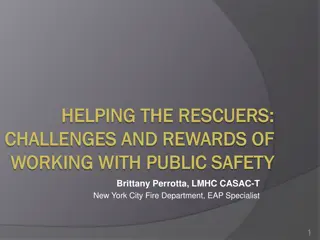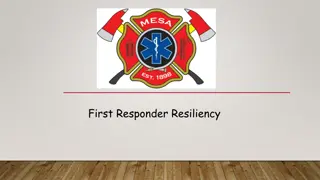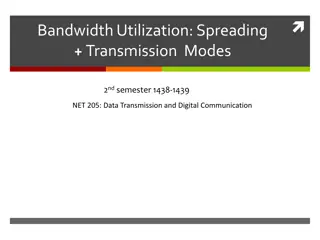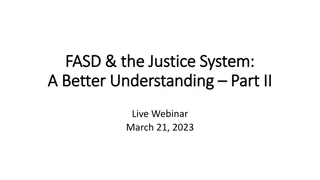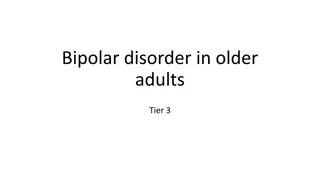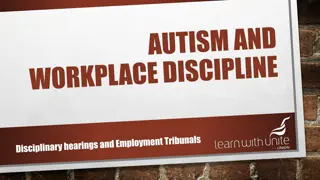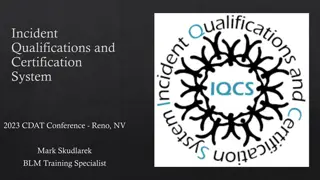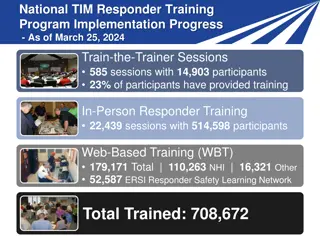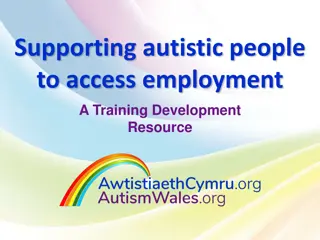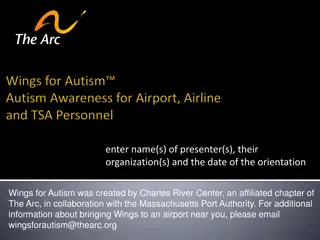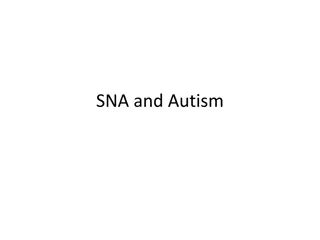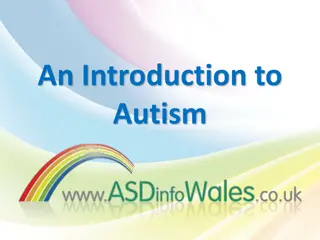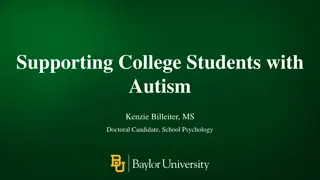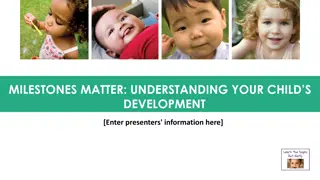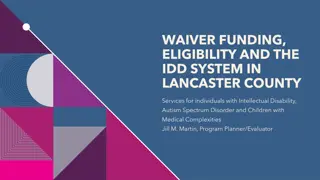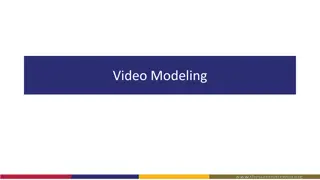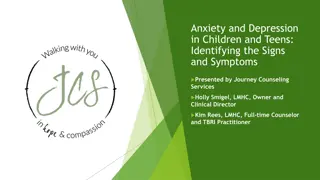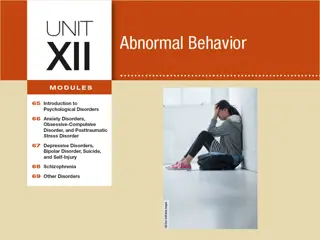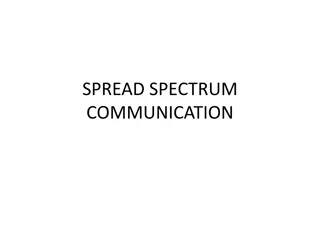Understanding Autism Spectrum Disorder for First Responders
Individuals with autism spectrum disorder (ASD) face challenges in social interaction and communication, making them vulnerable to various crimes and abuse. This training program provided by The Arc of Adams County aims to enhance recognition of disabilities, particularly ASD, among first responders to improve interactions and support for individuals with special needs.
- Autism Spectrum Disorder
- Disability Recognition
- First Responders
- Training Program
- The Arc of Adams County
Download Presentation

Please find below an Image/Link to download the presentation.
The content on the website is provided AS IS for your information and personal use only. It may not be sold, licensed, or shared on other websites without obtaining consent from the author. Download presentation by click this link. If you encounter any issues during the download, it is possible that the publisher has removed the file from their server.
E N D
Presentation Transcript
Disability Recognition & Suggested Responses For First Responders City of Thornton Presented by The Arc of Adams County April 2013
Introduction Individuals with autism spectrum disorder (ASD) have difficulty picking up social cues (social referencing) and understanding other individual s thoughts and intentions, making them vulnerable to a range of crimes, from fraud and theft to more violent crimes. Individuals with ASD are also generally taught compliance from a young age, making them easy targets for abuse and victimization. When assisting a person on the autism spectrum, First Responders should take specific actions to communicate and support the individual.
Outcomes for the training: Increase ability to recognize a person with a disability, especially a person with Autism Spectrum Disorder Increase awareness of challenges associated with this population Increase interaction success
Overview of ID/DD (Intellectual/Developmental Disability) IQ lower than 70 (average is 85 115) Manifested before age of 22 Deficits in adaptive skills (e.g. self-care) Termed mental retardation for diagnostic purposes only Generally better at concrete thinking, may have difficulty with abstract concepts (e.g. when?) Often taught to get along with others and respect authority
People First Language People with disabilities are people first Disabling condition is just one aspect, doesn t totally define the person A person who has autism vs. an autistic person
Americans with Disabilities Act Same rights and protections as all citizens ADA provides for reasonable accommodations in policies, practices and procedures (access to familiar support person, providing interpreter)
Autism Spectrum Disorder (ASD) Neurodevelopmental disorder Social impairments, cognitive impairments, communication difficulties, and repetitive behaviors Affects in varying degrees, severity & symptoms Occurs in all ethnic, socio-economic and age groups Presently impacts 1 in 88 children in the U.S. Higher occurrence in males, 1 in 54 impacted No two individuals with autism are alike
Autism Spectrum Disorder (ASD) Seven times more likely to get involved with police (traits = red flags, wandering, eloping) 50% of individuals are non-verbal; additional 20% can present as non-verbal when stressed Cannot be identified by appearance Have sensory dysfunction/sensory overload Low or no sensitivity to pain Engage in self-stimulating, repetitive behavior
Identifying Autism Typically no external indicators Subtle cues exist Recognition comes with evaluation of information (physical cues, body language) May have identifying info (bracelet, necklace, shoelace) Understanding the common characteristics of autism may help you to respond most effectively
Autism Characteristics Limited or no eye contact Unable to speak, speak with difficulty, rambling speech, or echo what you say May appear hearing impaired Need or possess assistive device/picture system to communicate
Autism Characteristics Dart away unexpectedly Appear anxious or nervous If verbal, answers may seem loud, blunt May appear argumentative, stubborn, or belligerent May exhibit inappropriate laughing, giggling
Autism Characteristics Exhibit forms of self-injurious behavior Little or no sensitivity to pain Have no fear of danger or consequence Sensory dysfunction (loud noises, bright lights) Display discomfort with change, new situations
Autism Risks May not know what to do, how to get help May not be able to communicate May not respond to a uniform, badge, or other emergency response symbols Avoid eye contact (not disrespectful) Make repetitive motions or sounds (comfort)
Autism Risks Do not question rules or those in charge Are not assertive Agree with authority figures out of necessity Always honor others opinions Taught to be obedient and dependent
Autism Risks May not understand what is expected of them Become upset when touched (warn why) Not provide I.D. when asked. Lack awareness of danger (may bolt into traffic)
Autism Risks Not respond to stop Appear to be under the influence Become self-injurious Become aggressive
Specific Risks: Police Run toward or away from you Reach for badge or gun Admit to crime they didn t commit Look guilty due to lack of eye contact Under-developed trunk muscles
Specific Risks: Fire Individual may re-enter burning building Require forced entry through locked doors, windows To move quickly wrap individual in blanket
Specific Risks: EMS Often high threshold for pain Unusual response to pain: laughing, humming May have injuries that aren t obvious May suffer from seizures
Challenges for Persons with ASD Difficulty managing and controlling frustration Difficulty thinking through ways of resolving frustrating situations Persist in inflexibility and ineffective response even in the face of meaningful consequences Explosive episode may seem out of the blue
Executive Brain Function Deficits Executive function = actions we perform to ourselves, direct at ourselves to accomplish self- control, goal-oriented behavior Executive function compares to conductor s role in orchestra Deficits cause difficulties managing and controlling emotion
Agitation, Escalation and Meltdown Early phase vapor lock ; frustration cases breakdown in ability to think clearly Strategies to enable calming and refocus Meltdown neural high jacking , rational thought gone, debilitated state of incoherence If possible, if safe, wait it out
Sensory Over-Stimulation Sensory over-stimulation = Sensory overload Occurs when sensory experiences are too much for an individual s nervous system Cannot process all the input in order to make meaning of the sensory experience Sensory overload can be physically painful Negative response: shutdown, escalate, run away
Sensory Over-Stimulation Hearing: Loud noise, sound from multiple sources (several people talking at once) Sight: Bright lights or environments with lots of movement (crowds or fast scene changes on TV). Smell and Taste: Strong aromas or spicy foods. Touch: Tactile sensations (touched by another person, the feel of cloth on skin)
Is Sensory Over-Stimulation a Factor? Look for outward behaviors Move person to quiet place Calm creates calm Geographic containment Restraint last resort Avoid face down take down
Why are First Responders Called? Suspicious behavior Inappropriate public contact Wandering
Autism and Wandering: (leading reason for first response contact) Over 20% individuals with ASD encounter First Responders due to wandering/eloping About half of children with an ASD attempt to elope from a safe environment (4x rate of unaffected) In 2009 2011 accidental drowning accounted for 91% total deaths of children with ASD 32% of parents reported a close call with a possible drowning
Other Common Reasons for First Response Parent or caregiver actions misinterpreted Escalated behaviors at home, retail, schools Person trespassing, unaware Person appears to be a threat due to suspected substance abuse
Interaction Guidelines If possible locate caregiver or support person Seek to restrict sensory input (lights, # of people) Ignore any odd behaviors unless dangerous If in meltdown, let them de-escalate on their own if safe; be alert for seizures Restraining a person with autism may result in fight or flight, which can look like intentional aggression
Interaction Guidelines Whenever possible, constrain by geographic containment vs. physical force Avoid chest-down holds as weak chest muscles = difficulty supporting airways If physical restraint is required, handcuff in front, officer on each side holding upper arms Generally firm pressure touch is preferred
Interaction Guidelines Use a calm voice, calming body language Ignore any unusual behavior or disrespectful words Speak slowly using simple concrete words Ask one question at a time/ one instruction at a time Allow 15 30 seconds process/response time Avoid touching if at all possible
Interaction Guidelines Non-verbal individuals may use alternative communication method (picture cards) Model the behavior you want the person to display Talk to anyone who already knows the person Allow an agitated individual with autism to calm down without your intervention if possible
Emergency Responses Breakdown information fire, come with me Use signals, hand gestures hold out hand and say come with me Provide pictures instead of words Ask open ended questions Allow extra time for response (15-30 seconds) Point to things when referencing in speech Move person to quiet location if possible
Emergency Responses Be alert for impulsive behavior, dart traffic If not safety risk, ignore repetitive behaviors If possible give advance warning of transition Be visual whenever possible, show, don t tell Be direct, concrete, specific Don t assume alcohol, drug use Important to reassure person with each step Explain what you are doing and why
If possible do not: Express anger, impatience or irritation Move suddenly Speak rapidly Use derogatory language, statements, terms Touch the person unless absolutely necessary Leave them unattended
Our Community CARES C - locate a Caregiver A - don t make Assumptions R - Restrict sensory input E - Empathize S - Secure


